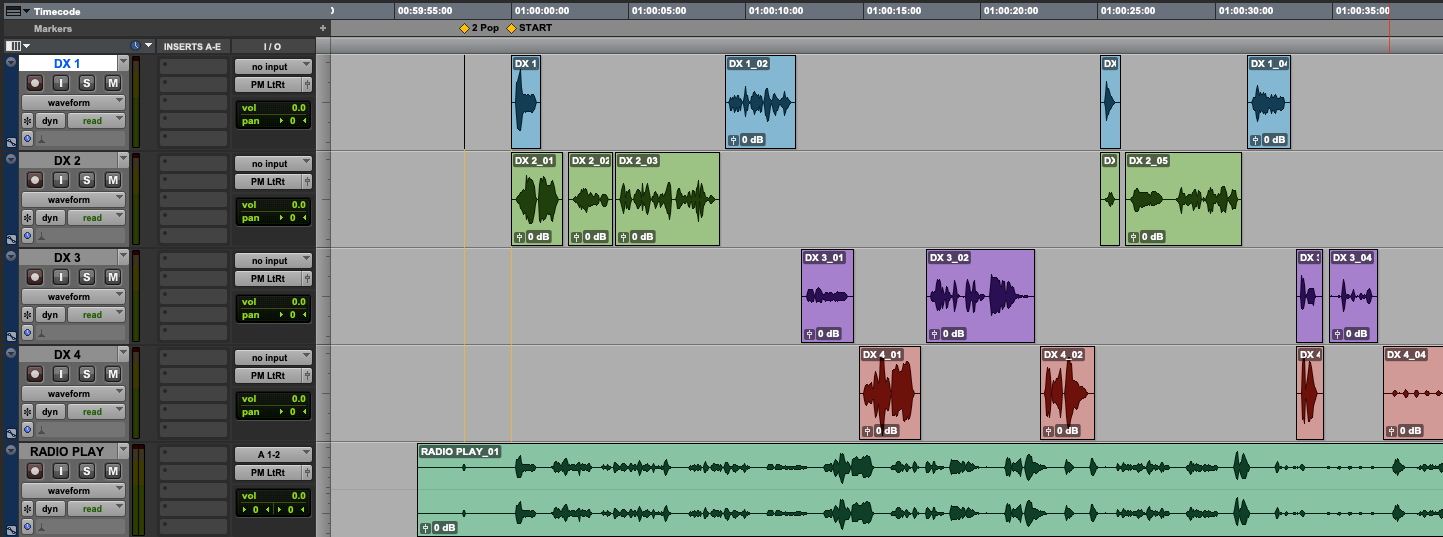A COLLABORATIVE POST
WRITTEN BY TIM VINDIGNI & TESS FOURNIER, BOOM BOX POST
Radioplays were something I had not experienced until I started working at Boom Box Post. Before truly understanding what a radioplay was, I thought the term was reserved to describe plays from the 30s and 40s (popularly known as radio dramas) which were performed and broadcast over the radio. Obviously, the two have nothing to do with each other.
As it turns out, a radioplay is a vital step exclusive to the animation pipeline. At the time, I was new to the world of animation, so it made sense why I had not come across one before. For this reason, I thought outlining the basics of a radioplay would make for an interesting read to anyone else who is unfamiliar with the process. To make sure I pass along the proper information, I’ve enlisted our Supervising Sound Editor Tess Fournier. Tess handles all the client-attended radioplay sessions at BBP. Let’s dive in!
What is a radioplay?
A radioplay is an audio-only string-out of all of the selected takes for each line of an episode, timed out to play like an episode. If necessary, temp sound effects and music are also included. Basically, the full episode minus any visuals.
For those who are unfamiliar with the term “selected take,” when a voice actor is recording their lines for an episode, they’ll usually read the line more than once. Each time they read a line, it is called a “take.” During the record, the creative team will make selections on which takes they like. The take they like best is called the “select” or the “selected take.’
Similar to a live-action table read, a radio play is an edited “reading” of the full script for an animated project. Since voice actors will typically record at different times, even recording multiple episodes in one session, a radio play is often the first instance clients hear the full script read through as voiced by the actors.
Where Do Radioplays live in the production process?
Although we focus in audio post production at Boom Box Post, radioplays are actually considered pre-production since they’re completed before any animation begins. The order of events is script writing, dialogue records, radioplay, storyboards, animatic editing, then everything ships for animation.
Is a radioplay specific to animation?
Radioplays are guides for the animation department, so theyr’e not necessary for other types of media. Radioplays are done before any animation begins. When our radioplays are finalized, we send them off to the animation team and they begin storyboarding to our rendered out radioplay. The animators use the radioplay as a guide to pace out the visuals.
What is the importance of a radioplay?
The importance of radioplays is to set the pacing and serve as a guide for the animation department. We want to make sure our radioplays aren’t too long so the episode doesn’t run over and so that the animators have plenty of room to animate action between lines.
Radioplay reviews are also an opportunity for the writers to make cuts if an episode is running too long. For this reason, radioplays generally have to be under a certain length to ensure the final episode doesn’t run long.
What happens during a radioplay?
At Boom Box, when we handle radioplays for our clients, it is a two-step process. 1. We edit the radioplay together. 2. We review the session with clients, making any adjustments they might request.
During the initial edit, we assemble all of the selected takes, pacing them out so that during playback the sequence sounds like a natural conversation.
No major dialogue edits are made during this step other than adjusting for comedic timing, action etc. In specific circumstances, clients might request temp sound effects be included to help highlight any action that happens between lines of dialogue in the script. The same goes for any songs that will end up in the final episode.
Once we’ve finished our edit, we sit down with our clients and play through the radioplay. During this playback, adjustments are made to dialogue timing and alternative lines/takes are auditioned as directed by the clients.
Are there shows that don’t hold radioplays?
Yes, only some projects choose to use the radioplay process. Without a radioplay, the animatic editor and storyboard artists would receive a normal pause edit of the audio, which is a string-out of the selected takes without timing being adjusted for a natural playback. The storyboard artists would work with the untimed materials, and then the animatic editor would time out both the audio and visuals during his or her picture editorial.


